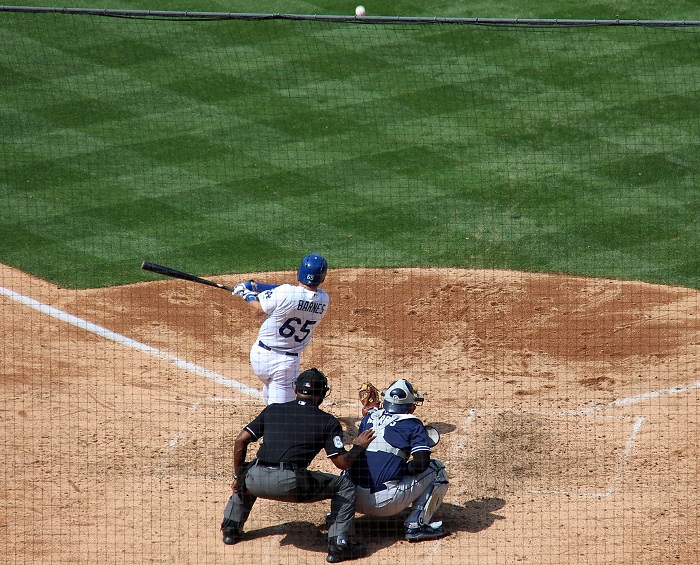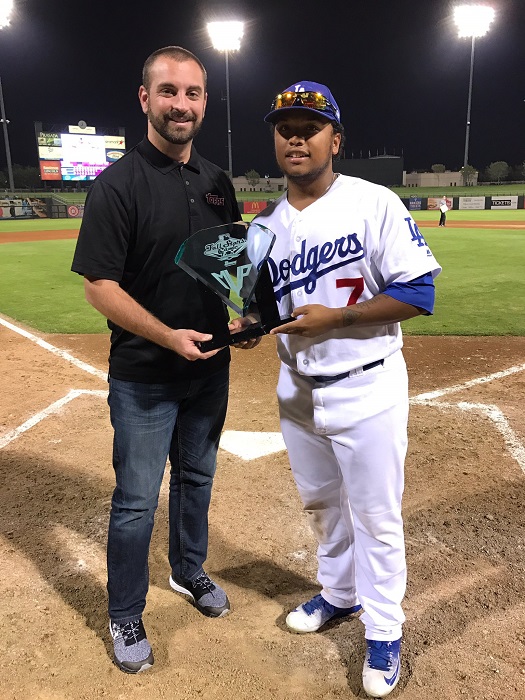With each passing day, we inch one day closer to the beginning of the 2018 baseball season. And with spring training now exactly one month away, baseball fans from across the country (and abroad) are making plans to visit their favorite MLB teams at their respective Cactus League and Grapefruit League spring training facilities in Arizona and Florida.
But for as fun and enjoyable as a spring training visit may be, the true importance of the month-long ‘mini-season’ of exhibition games – often referred to as “meaningless games” – is often glazed over and is far more important than you may think.
First the obvious: Spring training provides a safe place for major leaguers to get back into the swing of things (pun intended). Batters get to face pitching that ranges in talent from the unknown minor leaguer to the Clayton Kershaw‘s and Corey Kluber’s of the major leagues; and vice versa for pitchers. This re-acclimation for majors leaguers is crucial in the preparation for the upcoming and grueling 162-game season. But this is just scratching the surface of what spring training is all about.
The second reason goes below that surface mentioned above. This next fundamental part of camp are the battles for each respective position. Unless a specific role is predetermined before spring training begins, like those of Dodgers third baseman Justin Turner, shortstop Corey Seager, and 2017 National League Rookie of the Year first baseman Cody Bellinger, position battles are won or lost in the spring. It’s basically a tryout for guys who are already on the team’s 40-man roster and for those who are not but received an invitation to spring training camp, all of whom are hoping to win a spot on the team’s 25-man roster when camp breaks.
Dodger fans have witnessed some pretty epic battles take place over the past few years, such as right-hander Ross Stripling winning the fifth starting rotation spot in 2016 and Andrew Toles winning the opening day job in left (and center) field last season. Spring training 2018 will feature yet another epic battle; this one to determine who the Dodgers opening day – and perhaps everyday – catcher is going to be.

Still think spring training games are meaningless games? Try convincing Austin Barnes of that. The now 28-year-old Fullerton, California native had outstanding spring training camps in 2016 and 2017 and enters spring training 2018 as the leading candidate to be the Dodgers opening day starting catcher.
(Photo credit – Ron Cervenka)
Catchers Austin Barnes and Yasmani Grandal will face off to determine who will be the starting catcher. Grandal started the 2017 season firmly entrenched in the starting role. But as the season wore on and the playoffs approached, Grandal fell into a horrible offensive slump that he simply could not find his way out of. His inability to get base hits and drive in runs ultimately resulted in a shift in the minds of Dodgers president of baseball operations Andrew Friedman, general manager Farhan Zaidi, and field manager Dave Roberts. The change of heart and the lack of production from Grandal afforded more reps and more starts for (then) 27-year-old catcher Austin Barnes. Barnes did not miss his opportunity and was nothing short of incredible. He proved to everyone that he was – and is – ready to battle for that starting catching job once again, and hopes to seal that deal this spring.
But perhaps the single most important piece to the spring training puzzle is the opportunity for minor leaguers to show the front office what they are made of. A minor leaguer who does not make the MLB Pipeline Top-30 list can easily get lost in the overwhelmingly vast minor league system. But for some lucky farm hands, an opportunity often arises for them to showcase their talents on the major league side of spring training camp.
Dodger fans have seen players like Barnes, Seager, Bellinger and Chris Taylor prove that they were ready for their call-up to the bigs. Without spring training success, who knows how long it would have taken these guys to otherwise prove themselves worthy of their respective call-ups.
But spring training not only allows minor leaguers an opportunity to showcase their skills in front of their own front office brass, it also does so for other teams for potential future trades. Prospects who may not yet be ready to be woven into their team’s current fabric often times become crucial trade chips to land current top-tier MLB talent. Dodger fans have seen this happen on a number of occasions, most notably and most recently the trading of Dodgers top outfield prospect Willie Calhoun to the Texas Rangers to land right-hander Yu Darvish. There is zero doubt that scouts from the Rangers organization had seen Calhoun during the Arizona Fall League in 2016 and during spring training 2017. In other words, without the 23-year-old Vallejo, California native and Dodgers 2015 fourth-round draft pick, the Darvish trade probably doesn’t happen.

There is zero doubt that the success that Dodgers top prospect Willie Calhoun had during spring training and during the Arizona Fall League was the single biggest reason why the Dodgers were able to acquire right-hander Yu Darvish late last season.
(Photo courtesy of Arizona Fall League)
Spring training is the hub for all things baseball. Things like getting major leaguers back up to speed, positional battles, and prospect showcases are just a few of the many events taking place at a team’s spring training facility. So, when you are watching those games this year, keep in mind that they is a lot more to them than just what meets the eye.




 January 15th, 2018 at 11:00 am
January 15th, 2018 at 11:00 am  by Jacob Rudner
by Jacob Rudner  Posted in
Posted in 

Excellent piece, Jacob.
I have long been amazed about how cavalier many (most) veteran major leaguers are during spring training, especially those with lofty free agent contracts (or long term contract extensions signed while still in their arbitration years) are. They clearly consider themselves untouchable and, for the most part, they are. Granted, there are definitely exceptions to this – i.e. Clayton Kershaw, to name one.
Now this isn’t to say that these guys don’t prepare themselves for a long, grueling season, heaven knows they do. In fact, most players today arrive for spring training in far better shape than they were even a decade ago. It’s just that many of them project a “you can’t touch me” attitude. Two quick examples are guys like Carl Crawford and, more recently, Curtis Granderson, who got picked up by the Blue Jays on Monday on a one-year / $5 million deal. (Better them than us).
In direct contrast, the pre-arbitration-eligible guys and EVERY minor leaguer blessed to be invited to big league camp ALWAYS work their butts off trying to catch the eye of the brass.
I fully get that veteran players deserve credit and recognition for even making it to free agency and are invaluable for their veteran leadership in the clubhouse. But their overwhelming sense of entitlement (due in large part to the insanely powerful MLB Players Association) can be downright nauseating.
I suspect that many of these less-than-enthusiastic veterans have forgotten that no matter how good they were last year and no matter how good they are in general, there is always … always someone better than them out there who would love nothing more than to take their jobs from them.
Play Ball!